The following information is if you are seeking another solution and want to use Australian wool. I will say it again, if you are interested, the simplest way to participate is to go to the Etsy store and the nice people at Tempestry will send you the wool in the right colours and quantities.
I wrote to them before I started because I wanted to see if it was okay to use their idea with Australian wool, and I appreciate their kindness and helpfulness. I emailed them because for the past few years I have only been buying Australian made knitting fibre*. I buy Australian wool because I want to support Australian wool (cotton, alpaca...) and do not want to this industry to go under. The people at Tempestry were very understanding and sent high resolution jpegs so I could colour match. They even sent me the chart of Fahrenheit to Celsius so I could match all the temperatures exactly. I will say it again, if you are interested, the simplest way to participate is to go to the Etsy store and the nice people at Tempestry will send you the wool in the right colours and quantities.
I used two different wool brands, Nundle and Bendigo. The chart below shows the colours next to the colour ranges.
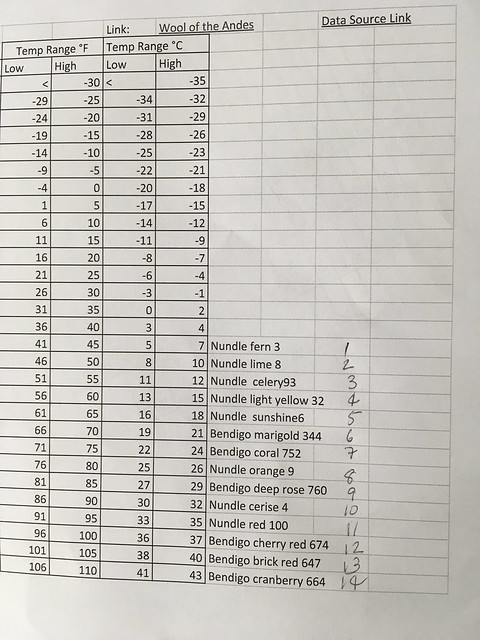
I found some aspects easier to hand write. I attached stickers with the relevant numbers to each ball of wool.
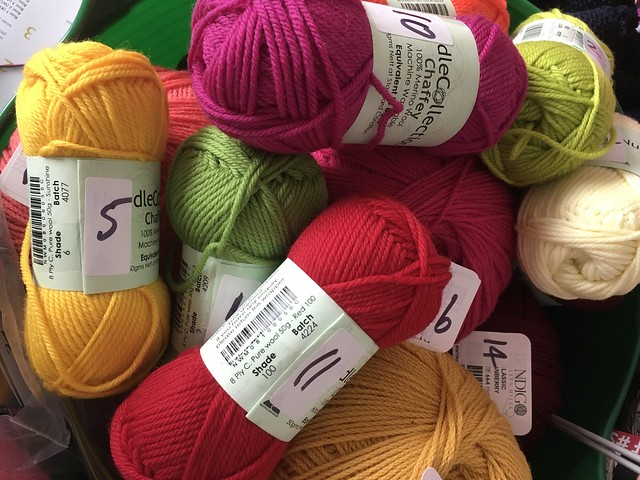
This makes it easy for matching the right colour with the temperature chart. I discovered the joys of climate data online (and it really is fun). The Australian Bureau of Meteorology has a lovely data site.
The chart below shows the number of the wool colour next to the temperature. I chose Inverell, NSW in 2013 and used moss stitch.
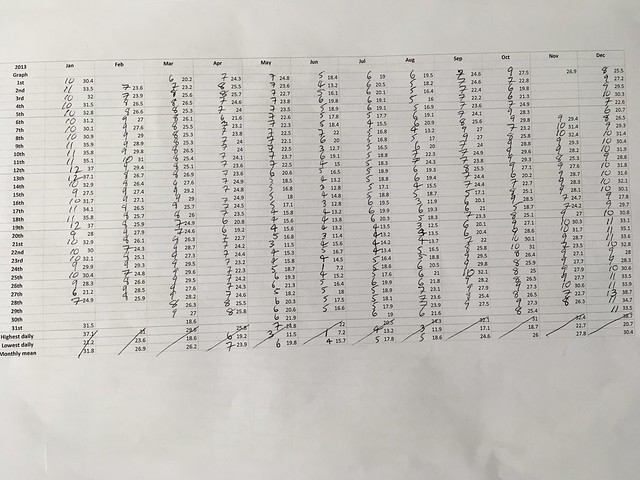
This next photograph shows the start of the knitting.
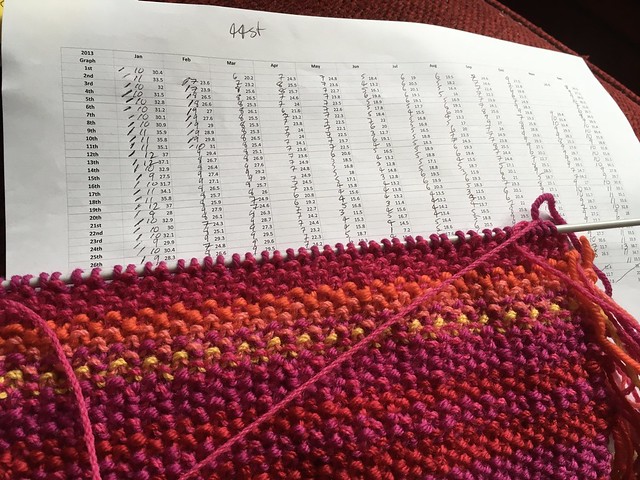
As you can see, I was not tidying the ends as I went. This was an experiment. While I have done multicoloured knitting in the past it has been jumpers or beanies where the ends are inside, not a scarf like this.
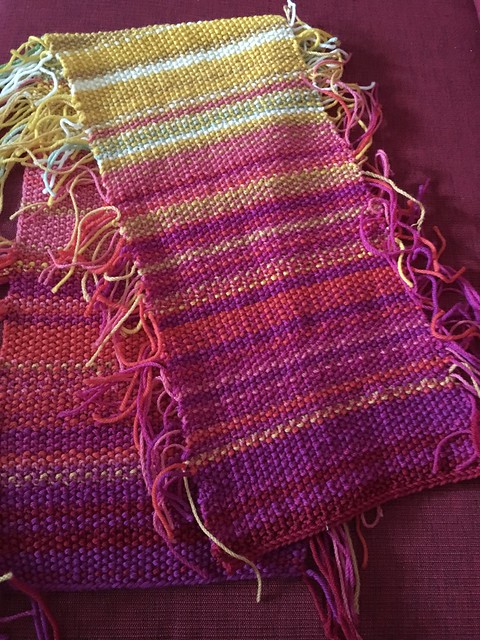
I did start tidying the ends (which you can see if you look closely to the top most section of knitting, but decided it was not worth it. This will work as a scarf with a sideways fringe.
I have started knitting Sydney, NSW 2017 temperatures, and am trying a method of knitting in the ends, but so far that seems to be just meaning that there is a definite front and back. The back being where the knitted ends are not as invisible as they should be.
I like this project because it is local studies, craftivism and datavisualisation. Local studies because each length of knitting records the maximum temperatures for a specific location for a specific year. Craftivism because it is using craft for activism, in this instance for climate change. Datavisualisation because it is showing the maximum temperatures for one year, and functions as a knitted graph.
I would really like to thank the people at the Tempestry Project for being willing for me to work with Australian wool for this project.
*I have to qualify this because before the last few years I was *mostly* buying Australian. This means in my fibre stash I have a range of knitting fibres from various locations around the world. Now I really buy all Australian unless I am in another location and am buying locally produced fibres. You can see all my photographs for this project below.



